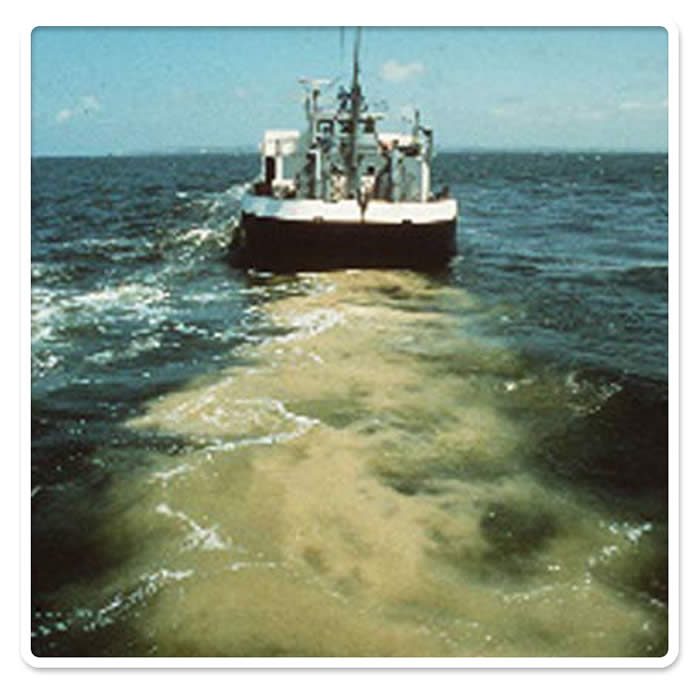Dumping
 The dumping of ships, radioactive waste, sewage sludge and dredge spoils has occurred in deep sea areas for several decades. The disposal of radioactive waste into the deep sea is now banned, but occurred throughout the north-east Atlantic between 1949 and 1982, with a total of 220,000 drums of low and intermediate-level radioactive waste dumped by European countries. These drums may leave a lasting nuclear legacy in the deep sea, with measurable levels of radionuclide contamination in anemones, holothurians, asteroids, decapods and fish. The dumping of ships, radioactive waste, sewage sludge and dredge spoils has occurred in deep sea areas for several decades. The disposal of radioactive waste into the deep sea is now banned, but occurred throughout the north-east Atlantic between 1949 and 1982, with a total of 220,000 drums of low and intermediate-level radioactive waste dumped by European countries. These drums may leave a lasting nuclear legacy in the deep sea, with measurable levels of radionuclide contamination in anemones, holothurians, asteroids, decapods and fish.
The effect of dumping waste is often highly localised. Ship sinkings create areas with low oxygen cocentrations and will also release pollution from the chemicals on the ship. Ships also provide hard substrate, which can be colonised by a variety of different organisms. This hard-substrate from ships or even oil and gas platforms may create ‘artificial reefs’ which can increase habitat complexity and in turn, the diversity and abundance of species in the local area, but more quantitative research is required into the impact of artificial structures on the seafloor.

|
